
Site is in development off and on. Link buttons with white backgrounds haven't been completed. Colored buttons should work. Please let me know if you encounter a broken link. Comments and suggestions welcome
South America
Uruguay 2018
After my visit to Uruguay in July 2012 I returned in 2018 to again work with Rafael Suarez on his current project. In the interim he had continued his quest to find early sites and to test and excavate them. He would have continued work at the Pay Paso site but because of extensive flooding of the Uruguay River it wasn't accessible. As an alternative he decided to investigate a locality in West-central Uruguay where a specific type of silicified limestone outcrops. This material was used to produce tools during the fishtail occupation of the Southern Cone, from southern Brazil to Patagonia in Argentina. His project aims to locate and assess the sources and to seek out areas where fishtail technology is expressed. Also part of the project is to better understand the production of fishtail and subsequent Tigre and Pay Paso points. This is where I come into the project. My contribution is to assess the flaking qualities of the raw material as well as the archaeological artifacts and to replicate the technologies to see if there are any diagnostic traits, other than the finished points, that can be used to identify assemblages without points. Since most of the investigation is survey-based, this will mostly be applied to surface assemblages. Rafael and crew are also identifying and testing rock shelters (abrigos) in the hopes of finding intact stratigraphic units with artifacts.

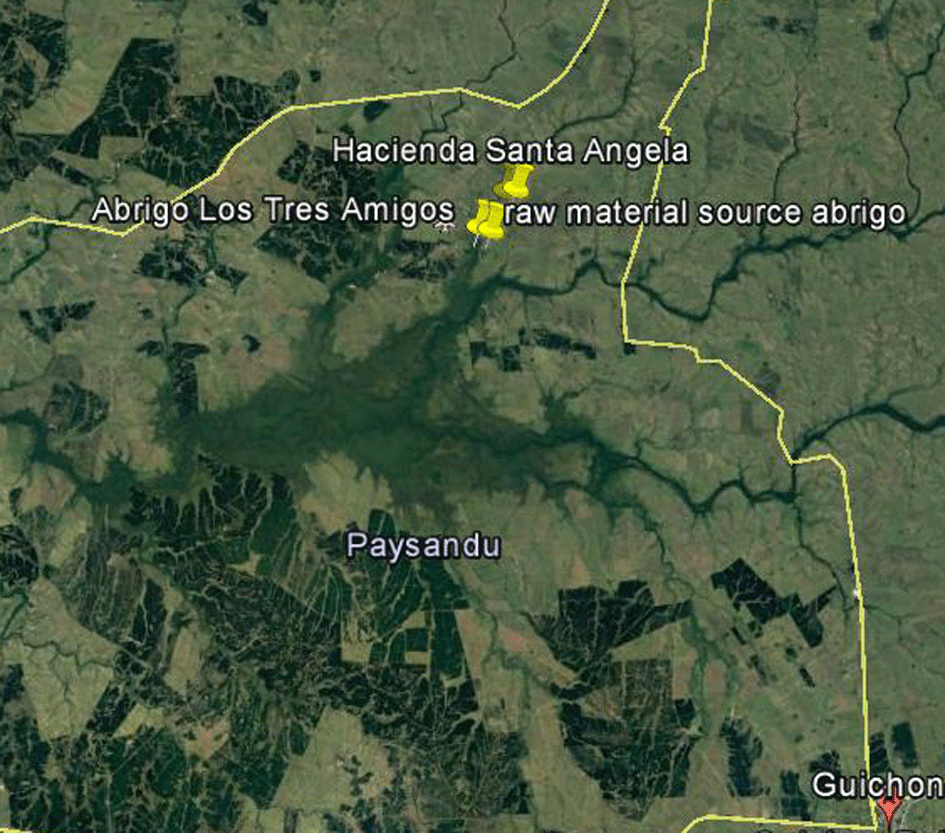
My trip started on 10th February in Cortez, Colorado and getting to Uruguay was an adventure in modern air travel. After various flight changes and lost baggage I arrived in Montevideo on the 13th. Rafael and a crew were already in the field. I was met at the airport by Oscar Marozzi,a colleague of Rafael's. He kindly put me up in his flat in the center of Montevideo. We had to go back out to the airport the next day to collect my bags. Later in the day we left from the central bus station, a busy modern station, for our destination town - Guichon. We arrived after 5 1/2 hours and one transfer to be met by Rafael and colleague Joaquin Astiazaran. They drove us the 60 km to the field camp on Hacienda Santa Angela,a working ranch. The last 25 km of the drive was on unpaved roads.
The hacienda is typical for this region, and for much of Latin America. There is the main U-shaped house, several smaller houses and outbuildings. One of these is a tall square water tower whose lower 3 stories have been renovated into bedrooms and bathrooms. This is where we stayed. We had an outdoor kitchen where we cooked,mostly on a wood fire.
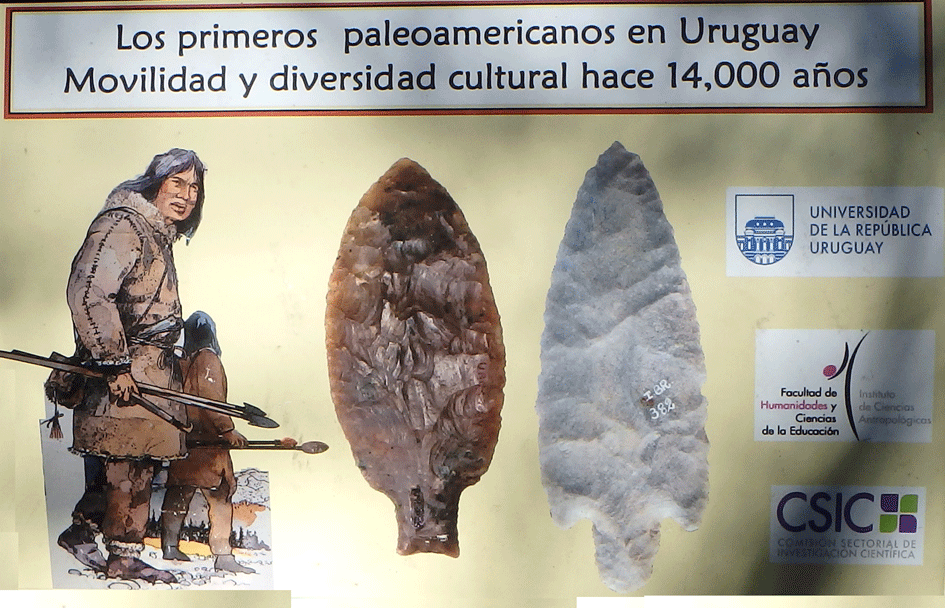
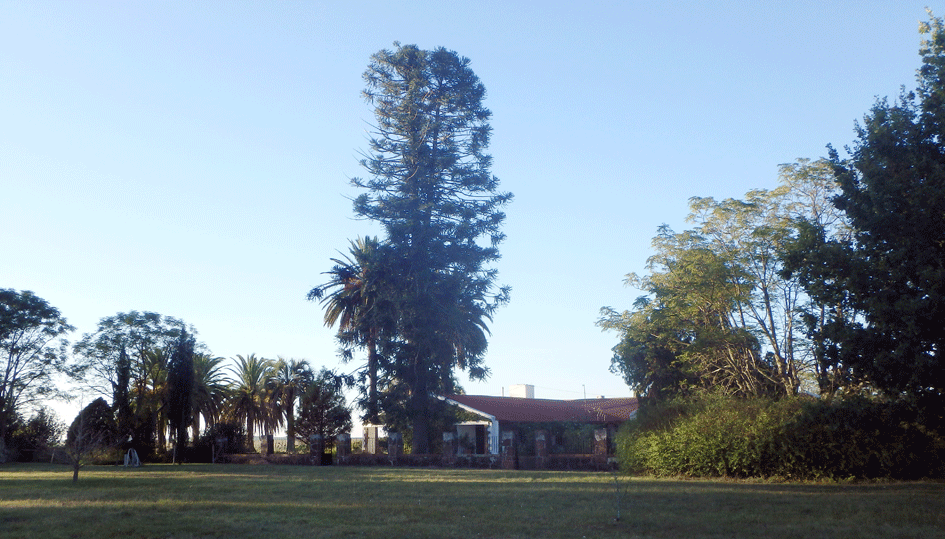
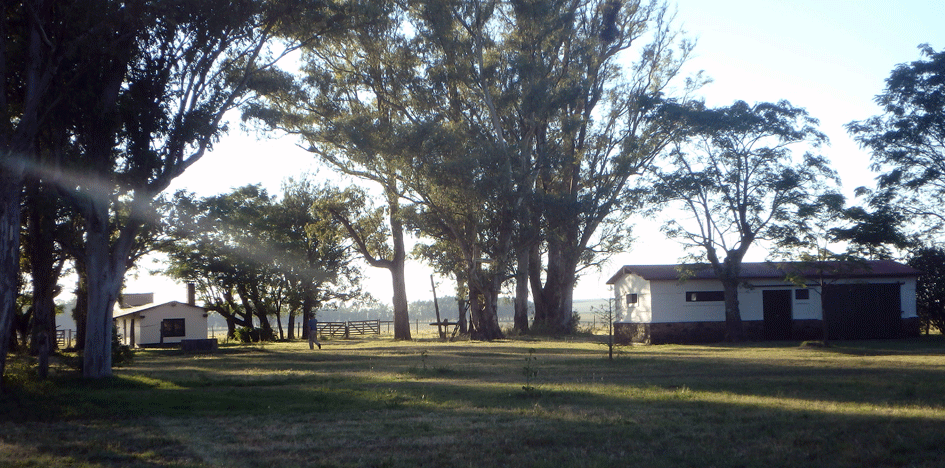



Project sign
General project location
Project localities
Main house
Out buildings
Outdoor kitchen
Communal parrot nests
Water tower accommodation
There are stands of tall eucalyptus trees filled with massive communal parrot nests. Each morning hundreds of parrots would leave for their diurnal forage with a deafening racket.The reverse took place in the evening. Even when the parrots were away there was constant bird sound;doves,cardinals and numerous other species. There were also insects and a large friendly spider.



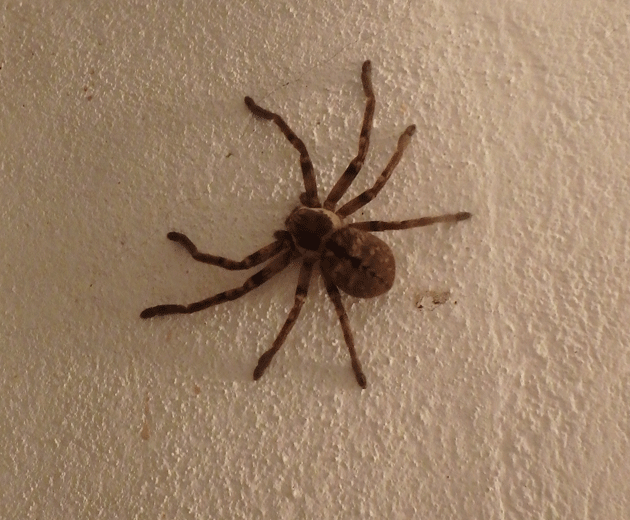
Cardinal Praying mantis Butterfly Bedroom visitor
About a kilometer from our camp was a lagoon (a stretch of river with water with dry areas on either end). In the evenings and on a day off I went fishing for the elusive Dourado. I had one on but it through the lure.
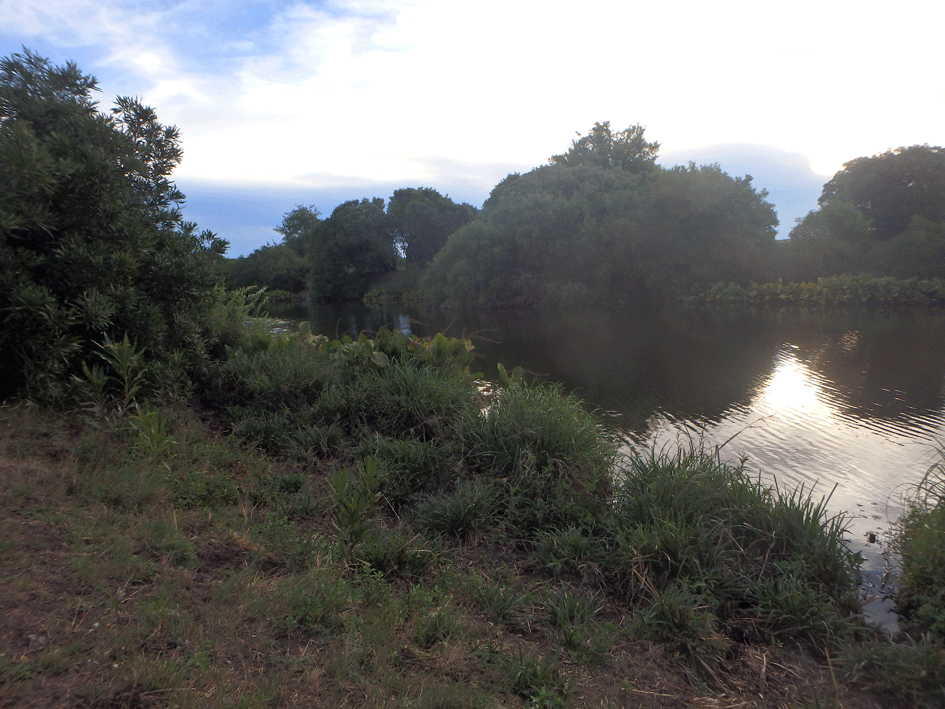
'Lagoon'
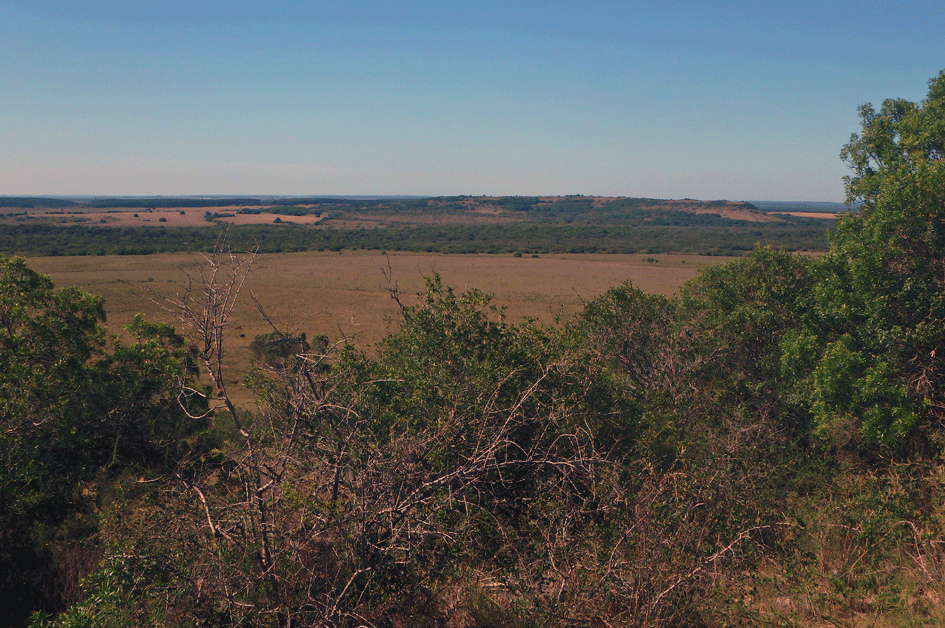
I saw quite a few fish,some large, but only caught one; species unknown to me. However,one evening I heard splashing close by in some river weeds and a young otter (lobo de rio) surfaced right at my feet. We were both surprised. Unfortunately, I didn't get a photo. Later,I saw a larger otter swimming on the other side of the lagoon. I never saw any reptiles or amphibians. There were many varieties of wild flowers.
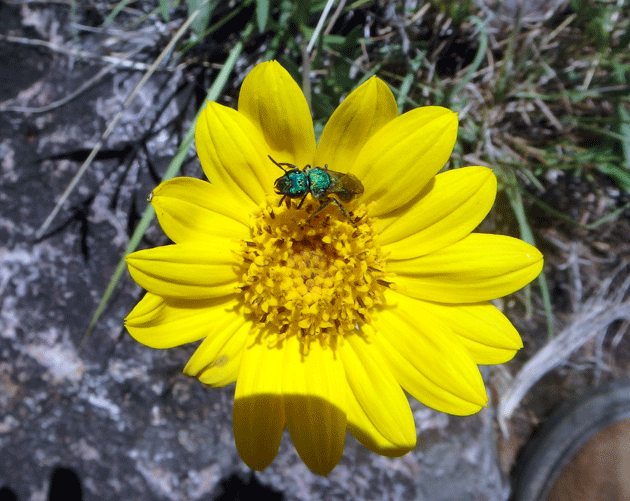
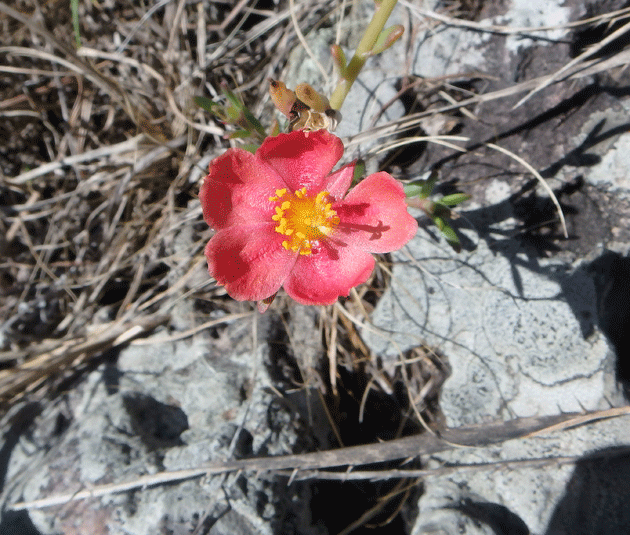
Wild flowers
The landscape around the hacienda is rolling grass land with shallow well-watered drainages, meandering rivers and areas of dense dry forest. There is also a row of forested mesas trending northeast to southwest.It was these mesas that were of primary interest. They exist because they are capped with silicified limestone,up to 80 meters in thickness! Abrigos (rock shelters/cavates) occur in the silicified limestone and some contain significant sediment accumulations; some dry some wet.

General landscape
The tops and slopes of the mesas are strewn with pieces of silicified limestone of various qualities, some very nice to knap. There are also flakes and the rare retouched piece scattered across the surfaces indicating an extensive use of the sources. Unfortunately, we didn't find any diagnostic artifacts, either on the surface or in test excavations in one of the abrigos. We also located a series of larger shelters at the base of a cliff on the west side of the river. We named this complex 'Abrigos de los Quatro Amigos'. There is good potential for archaeology.
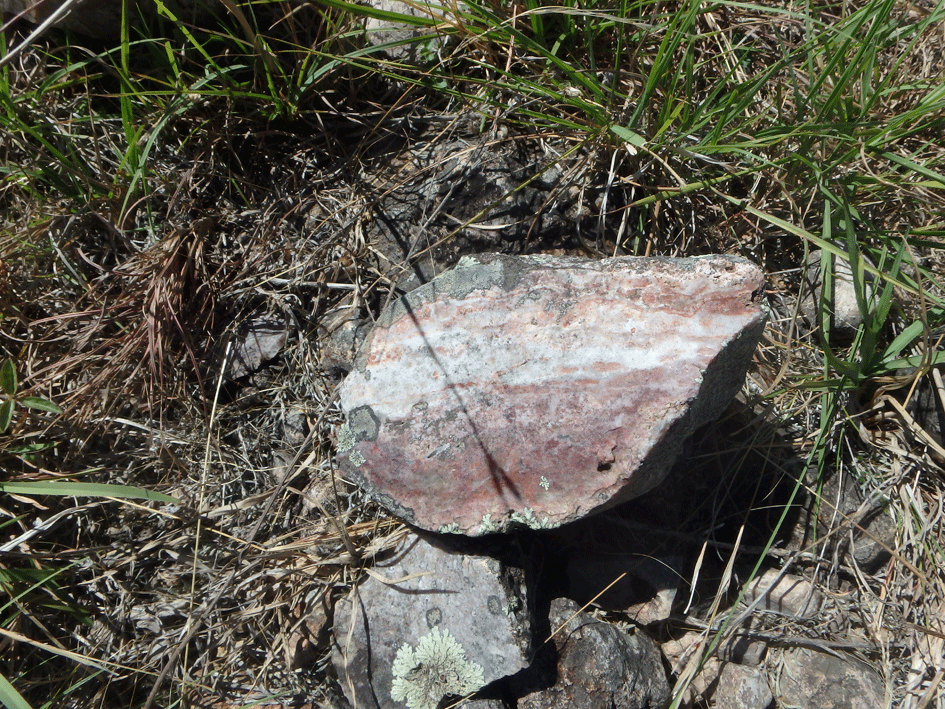

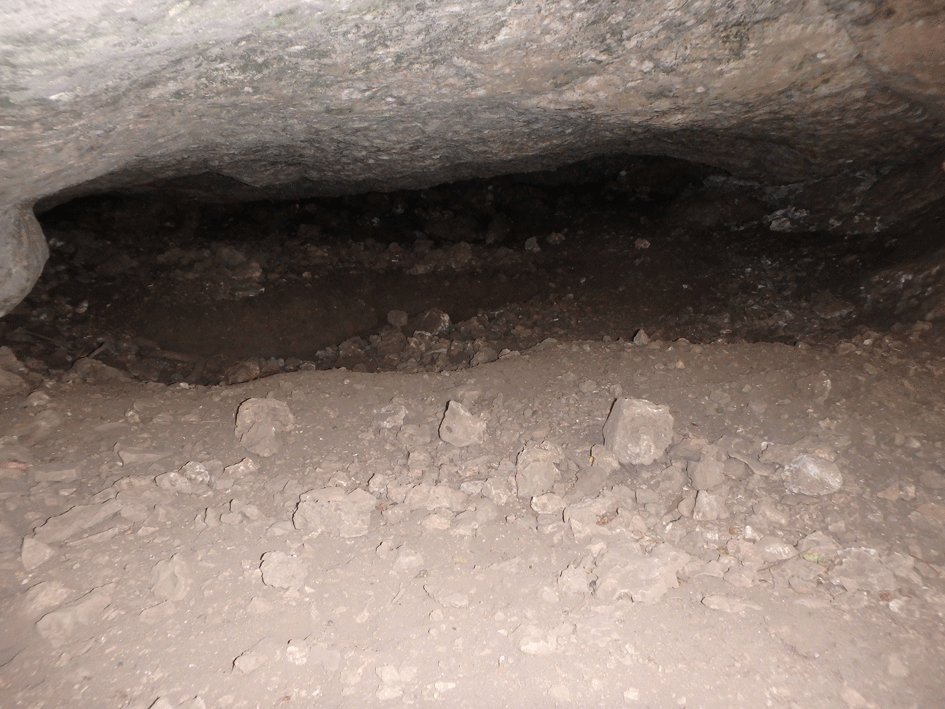

Mesa
Silicified limestone
Dry abrigo Test excavation
While I helped with survey I spent the majority of time knapping the silicified limestone and scouting for the better quality locations. Most of the material I would grade as ok but I was unable to find any that is as nice as that used to make the fishtail points I have seen. Rafael is convinced that there will be high-quality stone somewhere in his study area and I concur. In the areas we have examined we have seen no evidence of bifacial flaking and therefore probably not the area where fishtail knappers were working. Never the less I was able to use the average quality stone to make reasonable replicas. Rafael's students collected all of the flakes from several point productions for comparison with archaeological assemblages to evaluate whether or not I was
replicating the process or just the finished points. The verdict is out,especially since there are no known complete fishtail point production sequences. There is debitage from good context at the Pay Paso Site, but this seems not to represent complete production. We need more archaeological comparisons.

Knapping with Chica standing guard
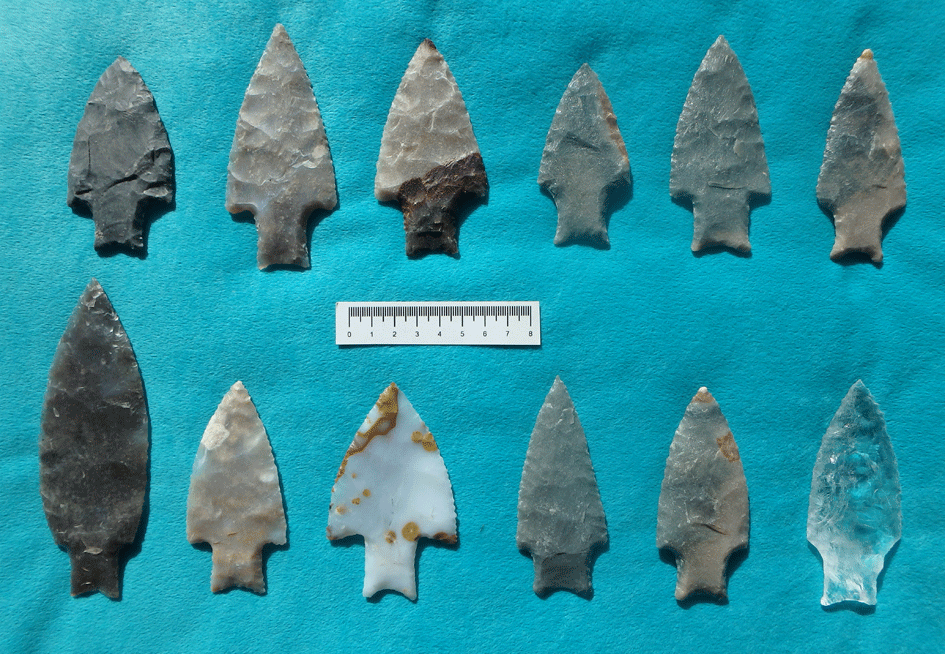
Fishtail point replicas none of which are the silicified limestone- i didn't take any photos of them
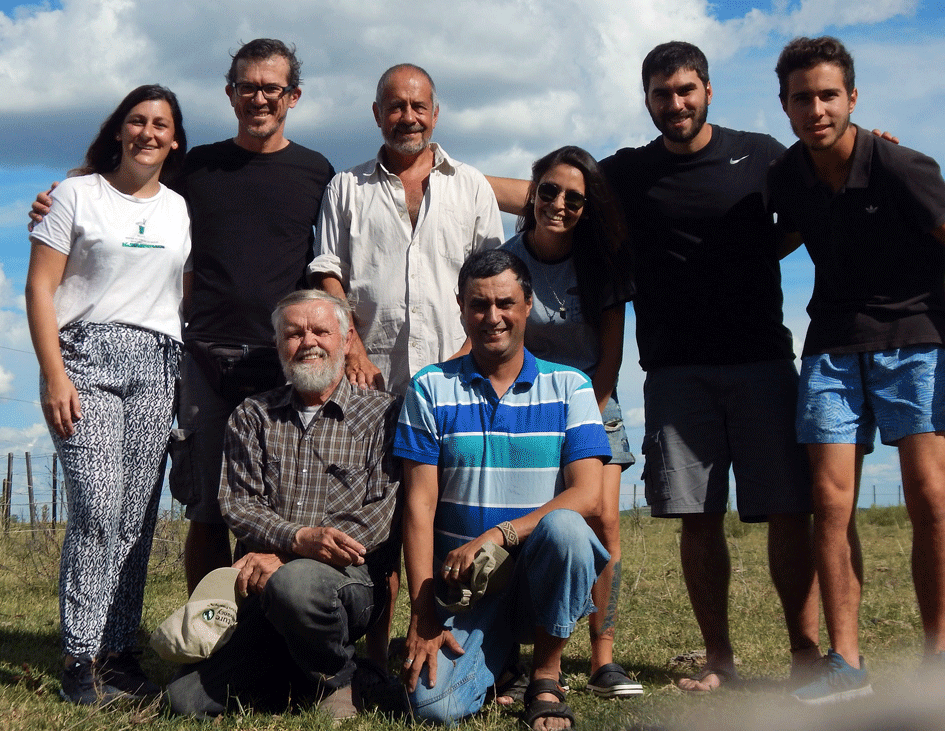
Our crew. Rafaelis front center
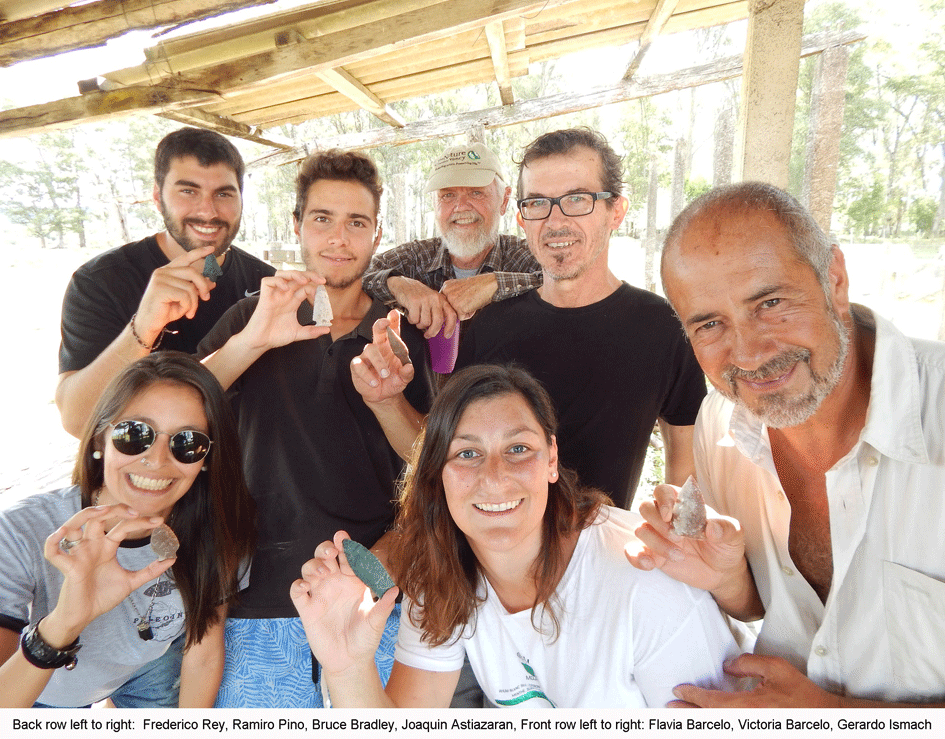
Happy crew with souvenir replica points